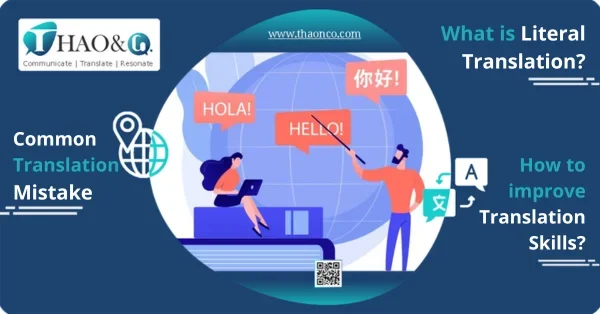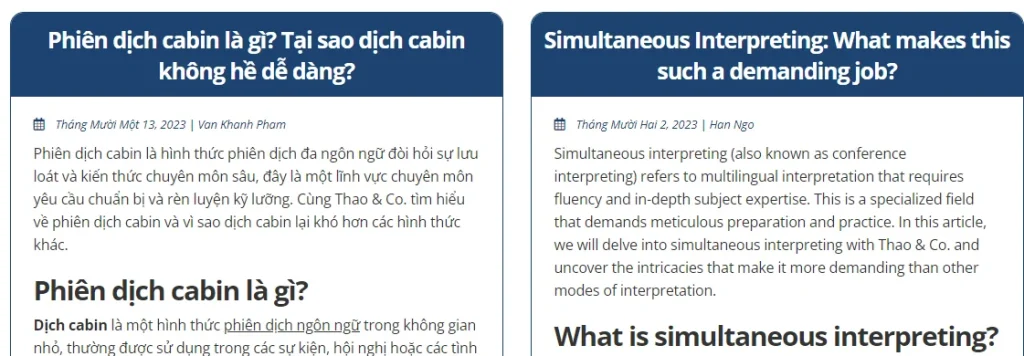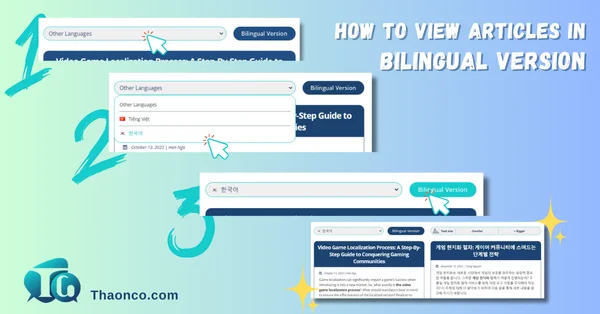Everyone in the field of translation has probably heard about Literal Translation at least once in a while. However, this term may be uncommon to industry outsiders or even new translators. So, what exactly is literal translation? How can one sidestep its blunders? In this article, Thao & Co. delves into the nitty-gritty of this topic. Read on to find out more.
In “A Textbook of Translation,” Peter Newmark defines literal translation as a word-for-word approach to translation. This method involves transferring the grammatical structure of the source language into the target language while maintaining the utmost equivalence. As a result, the method translates individual words without considering contextual nuances.
In most cases, it is regarded as a translation error resulting in an unnatural rendition in the target language. Nevertheless, certain types of specialized documents may require extreme precision in word choice. On this front, literal translation can be the preferred method.
Literal translation vs. semantic translation: what’s the difference? Literal translation involves translating each word individually, without changing the sentence structure or considering the context. In contrast, semantic translation prioritizes naturalness and contextual accuracy, captivating diverse audiences.
Literal translation holds value in specific contexts. It can ensure accurate meaning and eliminate ambiguity, making it ideal for translating technical manuals, legal documents, back translation, research papers, historical documents, and so forth. Besides, linguists also leverage it to analyze semantic, structural, and grammatical features for deeper understanding.
However, it typically serves as a reference, not a final product. This is because it often falls short of capturing contextual nuances, cultural references, idioms, and other elements that should be localized properly.
Ideally, to ensure accuracy and accessibility for local readers, consider reviewing and re-translating the documents.
Strict word-for-word translations often stumble in conveying the original message, leaving readers frustrated with unnatural phrasing.

Literal translation errors usually originate from: limited understanding of word nuances and contextual variations, a poor grasp of grammatical structures, etc. To achieve natural translations, consider these key aspects:
Here’s a real-life example demonstrating the key differences between a literal translation and a proper translation.
An example of literal translation is shown in the image below:

In Vietnamese, Simultaneous Interpreting is frequently referred to as “Cabin Interpretation” or “Cabin Translation,” which literally refers to interpreting done in a designated booth. However, the English word “cabin” carries a different meaning, primarily associated with a small cottage or shelter.
To avoid confusion among English speakers, it’s crucial to avoid literal translations like “Cabin Interpreting” or “Cabin Translation” for Simultaneous Interpreting. For clarity and accuracy, it’s recommended to use the term Simultaneous Interpreting when referring to this kind of translation.
The passage above is excerpted from the article Simultaneous Translation by Thao & Co. Explore our bilingual version below for professional translators’ insights on the discussed terms:

To access the bilingual version for all articles on Thao & Co. website:

Experience clear, precise, and well-crafted translation today. Contact Thao & Co. for professional, high-quality translation and proofreading services:
Start your project now and unlock immediate value! Visit the Get A Quote for a personalized quote and a free consultation.
What is literal translation? Perhaps you now have the answer to this question. While it has its place in ensuring accuracy, it can often lead to unnatural and confusing results.
For truly effective and natural-sounding translations, trust the expertise of linguistic professionals.